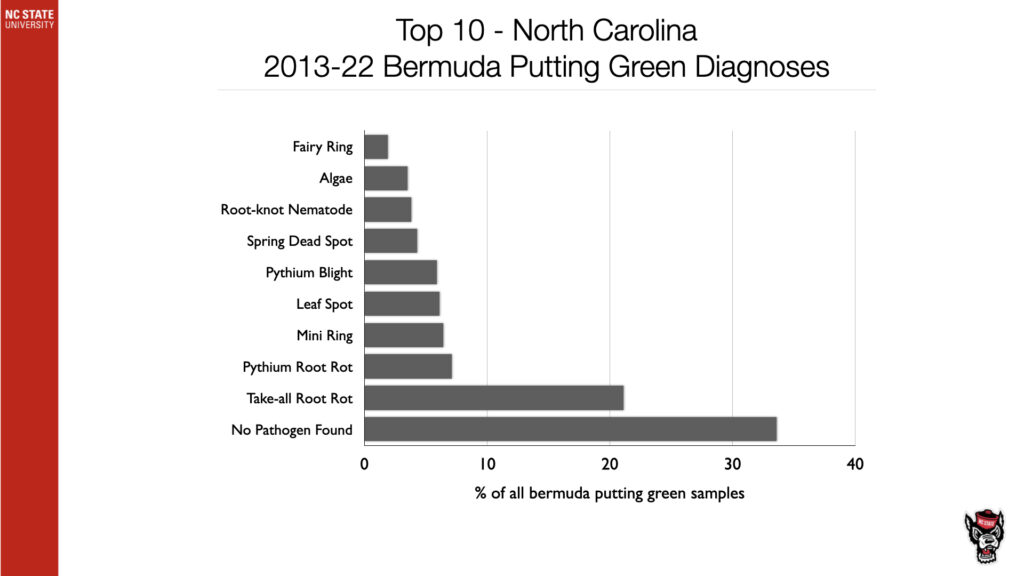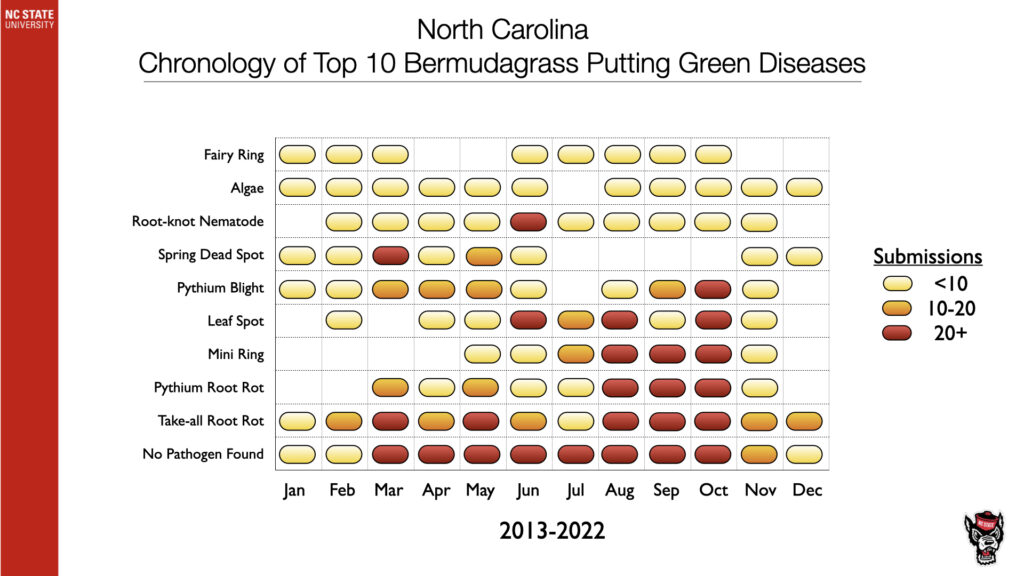North Carolina Putting Green Samples – 10 Year Review
go.ncsu.edu/readext?916250
en Español / em Português
El inglés es el idioma de control de esta página. En la medida en que haya algún conflicto entre la traducción al inglés y la traducción, el inglés prevalece.
Al hacer clic en el enlace de traducción se activa un servicio de traducción gratuito para convertir la página al español. Al igual que con cualquier traducción por Internet, la conversión no es sensible al contexto y puede que no traduzca el texto en su significado original. NC State Extension no garantiza la exactitud del texto traducido. Por favor, tenga en cuenta que algunas aplicaciones y/o servicios pueden no funcionar como se espera cuando se traducen.
Português
Inglês é o idioma de controle desta página. Na medida que haja algum conflito entre o texto original em Inglês e a tradução, o Inglês prevalece.
Ao clicar no link de tradução, um serviço gratuito de tradução será ativado para converter a página para o Português. Como em qualquer tradução pela internet, a conversão não é sensivel ao contexto e pode não ocorrer a tradução para o significado orginal. O serviço de Extensão da Carolina do Norte (NC State Extension) não garante a exatidão do texto traduzido. Por favor, observe que algumas funções ou serviços podem não funcionar como esperado após a tradução.
English
English is the controlling language of this page. To the extent there is any conflict between the English text and the translation, English controls.
Clicking on the translation link activates a free translation service to convert the page to Spanish. As with any Internet translation, the conversion is not context-sensitive and may not translate the text to its original meaning. NC State Extension does not guarantee the accuracy of the translated text. Please note that some applications and/or services may not function as expected when translated.
Collapse ▲The following post is a 10-year review (2013-2022) of turfgrass samples submitted to our lab from golf course putting greens solely in North Carolina. North Carolina is located in the transition zone and we have three distinct geographic regions (Mountains, Piedmont, and Coastal Plain) which means we have both cool and warm-season turfgrasses being managed for golf course putting surfaces. The following data documents the shift our state has made from what was mostly creeping bentgrass to ultradwarf bermudagrass, primarily in the Piedmont and Coastal Plain regions of our state. The Mountains are still predominantly creeping bentgrass and/or annual bluegrass. This is not to say creeping bentgrass no longer exists in these regions and it doesn’t mean that creeping bentgrass still isn’t a great choice. You can make up your mind after reading the following, but we think you will agree neither is perfect and at the end of the day you have to choose which turfgrass species is the best fit for your golf course and those who regularly play there. Enjoy!
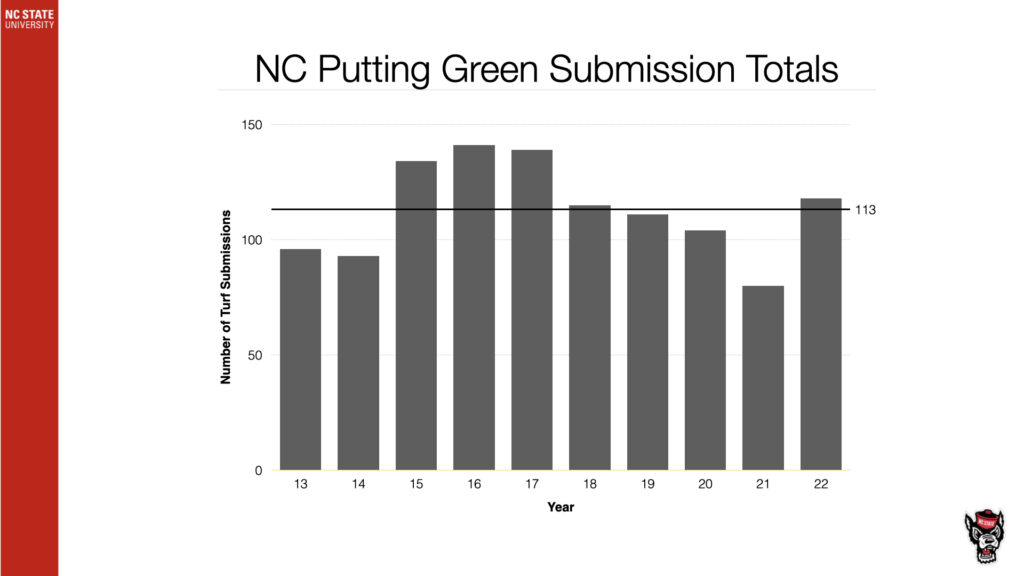
The Turf Diagnostics Lab receives an average of 113 submissions per year from golf course putting greens in North Carolina. This translates to around 225 actual turfgrass samples each year.
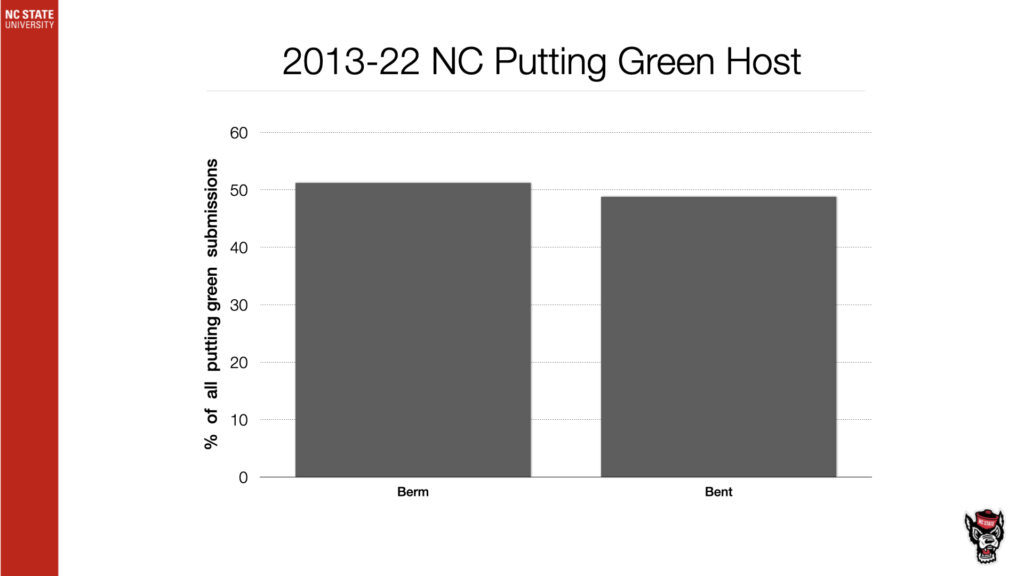
During this 10-year period, ultradwarf bermudagrass samples barely edged out creeping bentgrass samples with it being very close to a 50/50 split.
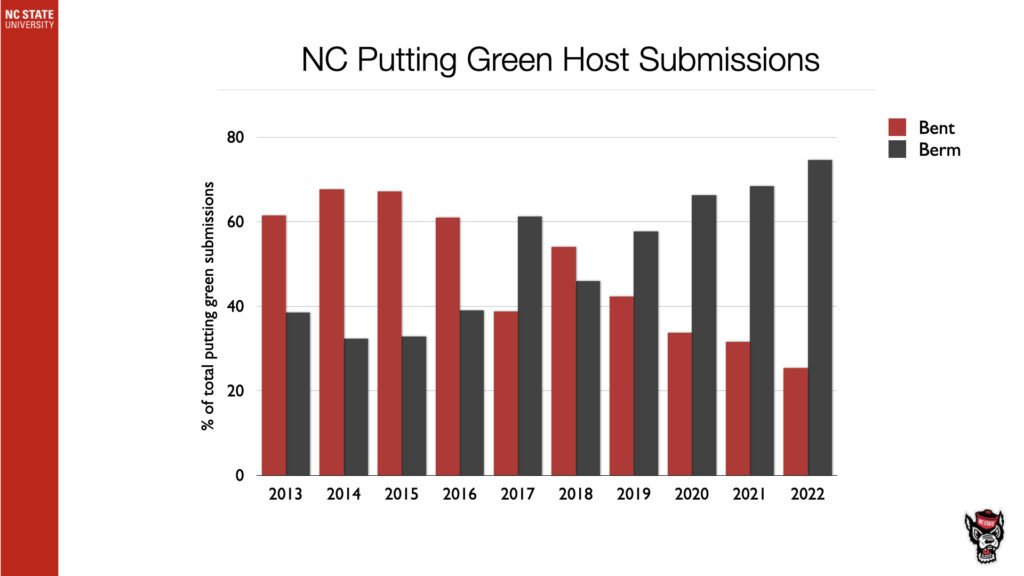
While we were predominantly receiving creeping bentgrass samples in the first half of this 10-year span, we have made the clear shift over to the majority of our samples being from ultradwarf bermudagrass putting greens as of late.
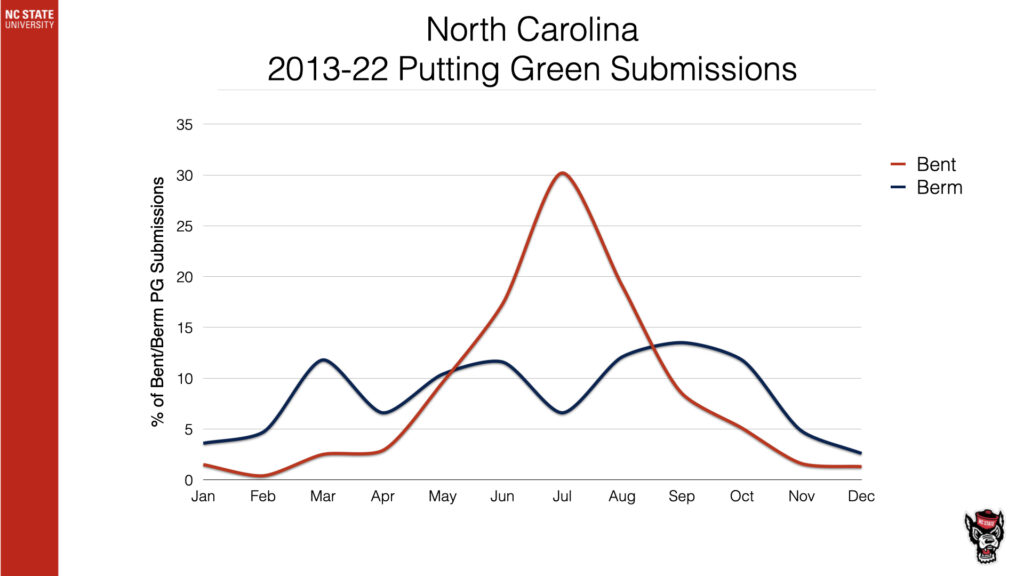
As expected, creeping bentgrass samples always produce a nice bell curve with the peak occurring midsummer. Bermudagrass samples on the other hand produce three distinct flushes of samples with the first being around dormancy break in the spring, the second in early summer, and the third as these grasses begin to enter dormancy late-summer through the fall.
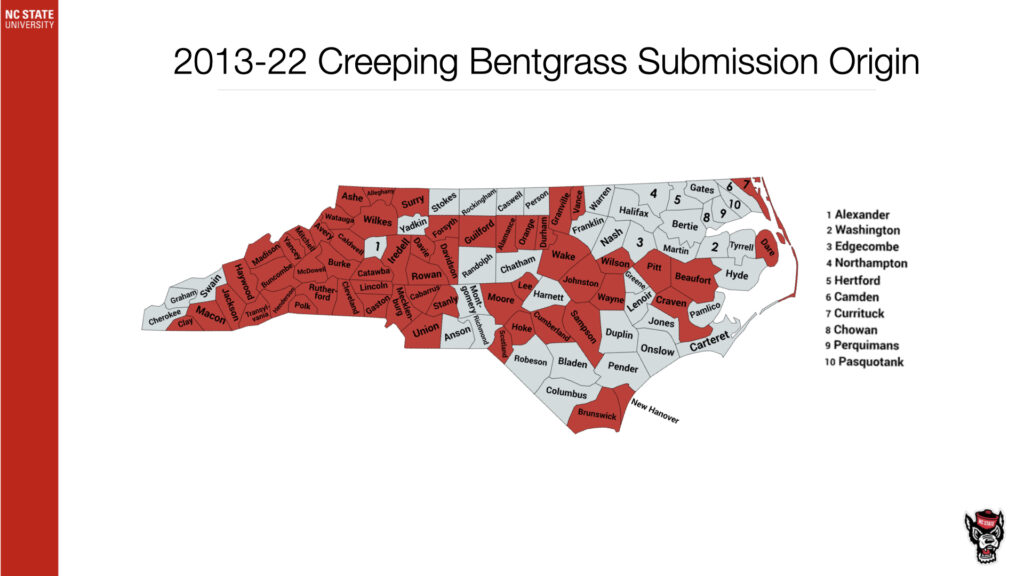
The red counties are where creeping bentgrass samples were submitted from during this 10-year time frame. It doesn’t mean creeping bentgrass doesn’t exist in some of these gray counties, we just never received samples from there between 2013-2022.
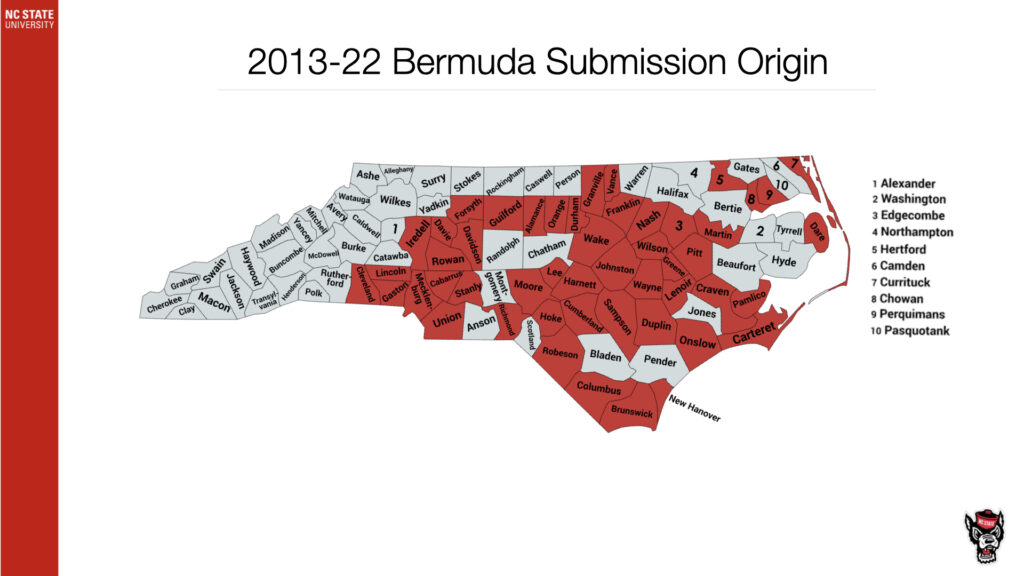
The red counties are where bermudagrass samples were submitted from during this 10-year time frame. It doesn’t mean bermudagrass doesn’t exist in some of these gray counties, we just never received samples from there between 2013-2022.
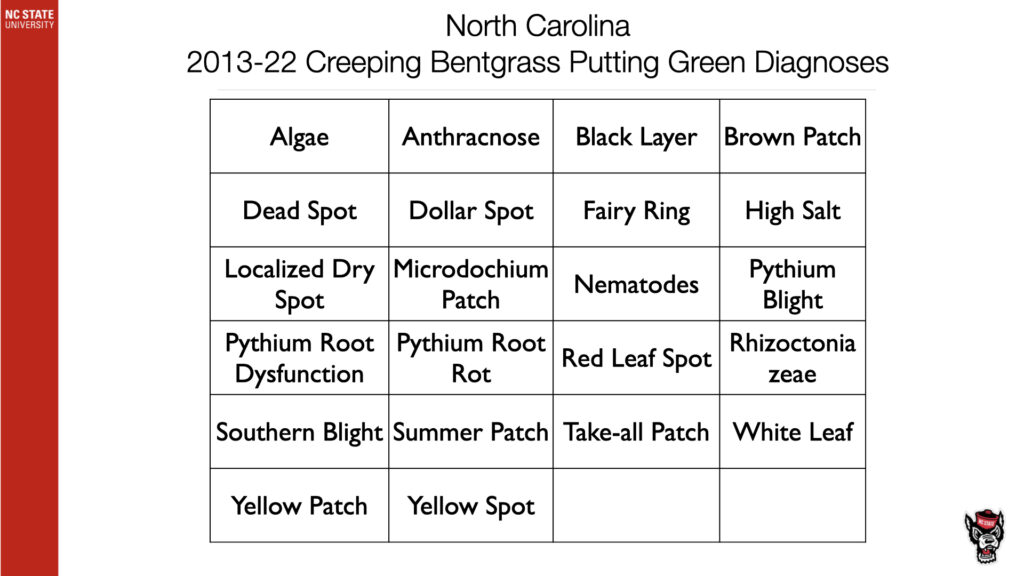
These are all the different diagnoses we made on creeping bentgrass putting green samples from North Carolina between 2013 and 2022.
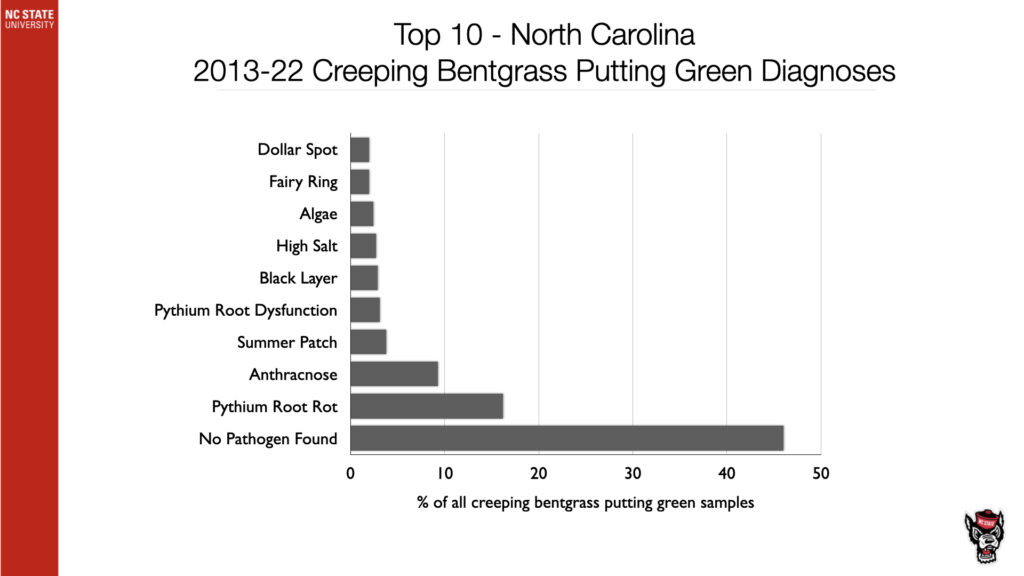
These are the top-10 diagnoses we made on creeping bentgrass putting green samples from North Carolina between 2013 and 2022.
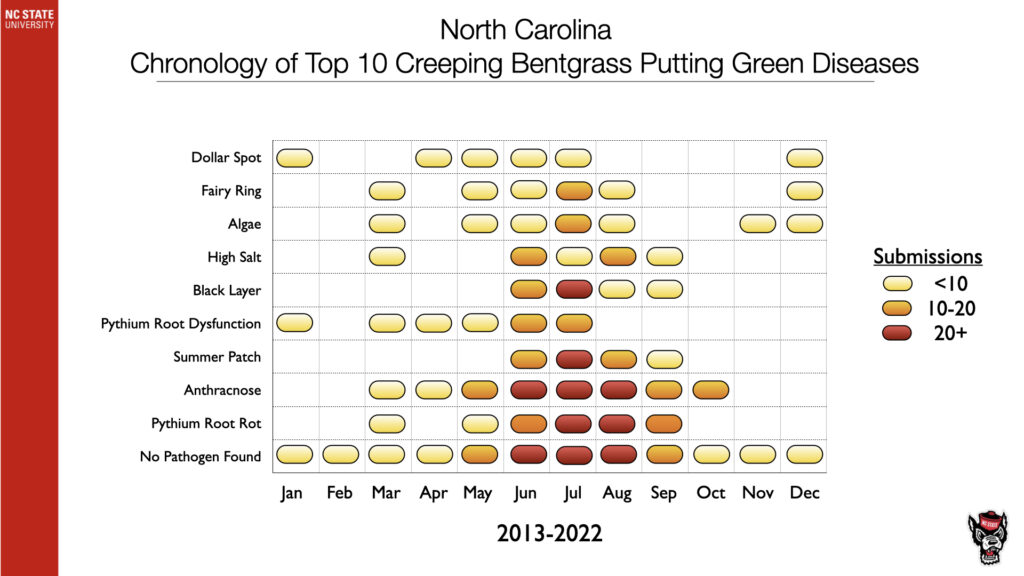
This is a heat map showing the time of year each of the top-10 diagnoses for creeping bentgrass putting green samples occurred during this 10-year period.
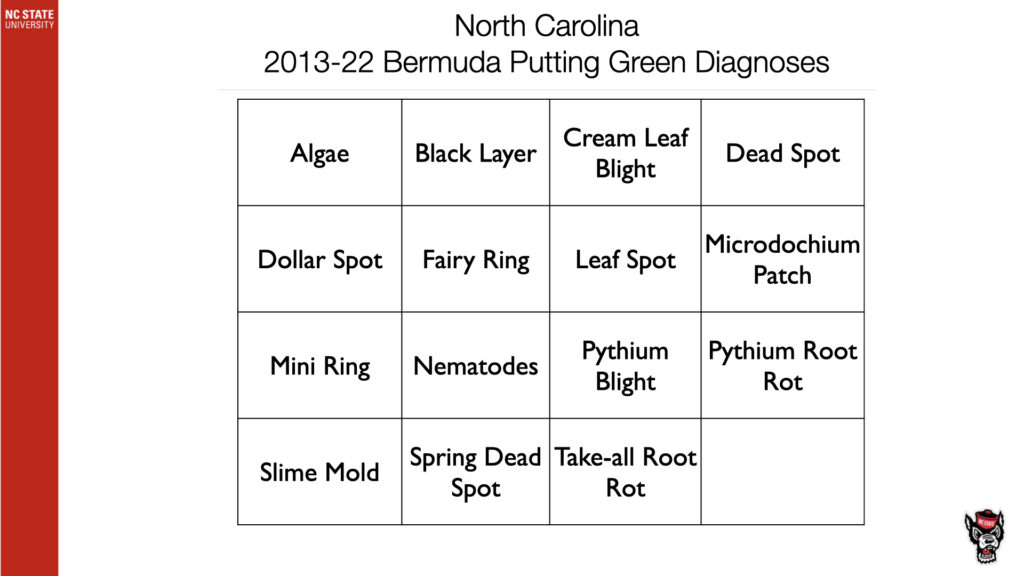
These are all the different diagnoses we made on bermudagrass putting green samples from North Carolina between 2013 and 2022.



